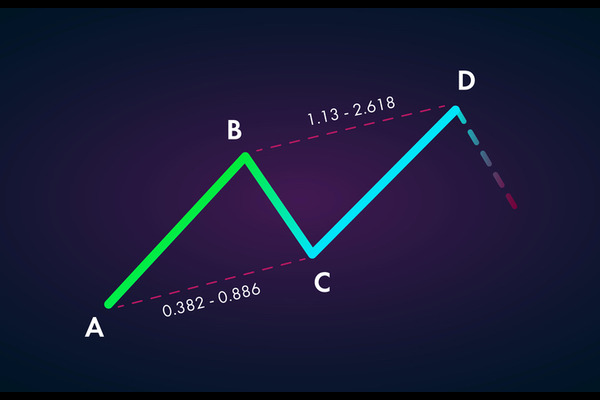The Evolution of Banks and the Differences in National Banking Systems
Nowadays, banks have become an indispensable part of our economic system,
with ATM machines found worldwide and even in Antarctica. This year, it seems
that banking has become a hot topic, but although banking business may sound
simple, it has been quietly and rapidly changing, completely different from
banks ten, twenty, fifty, or even a hundred years ago. Different countries, such
as China and the United States, have also developed vastly different banking
systems. These different banking systems largely shape the economic landscape of
various countries and have countless connections with their governments.

The Origin and Evolution of Banks
To gain a deeper understanding of banks, we need to go back to history. As
early as the 11th century, various gold coins existed in various European
countries, and merchants often gathered on outdoor benches for Currency Trading.
This bench is called "banco" in Italian, and later banks evolved from this term.
However, modern banks can be traced back to Italy in the 15th century, when a
bank was established and has a history of 551 years. It is the Siennamushan
Bank. This bank not only has a long history but also has a large scale, with
over 20,000 employees. One of the most important characteristics of early banks
was their ability to issue bank notes, which could be used for transactions. In
fact, these banks can use their own credit to issue currency, similar to ancient
Chinese banks and Shanxi note banks, and they can also issue their own silver
notes.
However, having the ability to print money does not mean that banks can
print money at will. At that time, banks attached great importance to credit
because why were people willing to use bank bills for transactions? The reason
is that they believe they can be exchanged for actual gold coins at any time.
Although banks have the ability to print money, this does not mean they can
indiscriminately issue currency. The main business models of these banks include
deposit taking, lending, and investment. Banks earn profits through the price
difference between these two aspects. In addition, they also charge transaction
fees by providing various financial services such as payments, fund
transactions, and asset management. Therefore, banks are actually intermediaries
of resources, promoting social production and consumption through the management
and allocation of resources.
The importance of banks
A bank is a resource intermediary responsible for allocating funds, which
makes it a key player in the economic system. For example, suppose there is a
milk tea entrepreneur who is skilled in making milk tea, but without bank loan
support, he may need to work long hours and accumulate sufficient funds to open
a milk tea shop. However, if the bank is willing to provide him with loans, he
can achieve his entrepreneurial dream faster, and the bank can also earn
interest, which is a win-win situation for both society and the economy. Banks
release the production and consumption capacity of society through resource
allocation, thereby promoting the development of the entire economic system.
Although banks do not directly create value, they indirectly promote economic
growth through resource mobilization.
The Relationship between Banks and Currency
The relationship between banks and currency is very close. Every bank loan is
actually equivalent to creating a new currency. Banks continuously drive the
flow of money by absorbing deposits, issuing loans, and investing. This is
particularly important because the liquidity of money determines the amount of
money in the entire economy. Banks play a crucial role in currency flows, and
their decisions affect the entire economy. Therefore, the banking industry is an
intermediary for resource allocation and the most critical part of the entire
economic system.
Supervision and Risk of Banks
The banking industry has a strong cyclical nature. When the economy is good,
they will lend heavily and make profits, but when the economy is bad, bad debts
will increase, making life difficult for banks. The banking industry is also
susceptible to systemic risks and therefore requires government regulation and
support. However, different countries adopt different regulatory approaches,
which is a bit like pruning a big tree. Each country has its own pruning style,
ultimately forming different forms of banking systems. The banking systems of
China and the United States are two typical different forms.
The Development of China's Banking Industry
The development of China's banking industry has gone through just a few
decades, but it has condensed the evolution of the entire banking industry history. In the early days of the founding of the People's Republic of China,
China adopted a planned economy model and did not require intermediaries to
allocate resources. The government directly planned everything. At that time,
there were mainly two banks in China, namely the Bank of China and the People's
Bank of China. The former is responsible for foreign exchange and foreign trade,
while the latter is responsible for almost all affairs, including money printing
and commercial banking business, especially deposits and loans for enterprises
and individuals. However, in reality, the business of commercial banks has not
yet fully developed.
After the reform and opening up, China's banking industry has developed
rapidly. China has established four major state-owned banks, namely the
Industrial and Commercial Bank of China, the China Construction Bank, the Bank
of China, and the Agricultural Bank of China, each responsible for different
fields of business. This clear division of business allows banks to focus more
on their respective fields, but it also leads to a lack of market competition
and inefficient resource allocation.
Against the backdrop of excessive lending, China established 12 joint-stock
banks in 1998, introducing a competitive mechanism. In addition, urban and rural
credit cooperatives have also merged and upgraded into commercial banks,
strengthening competition. State-owned banks have gradually been separated from
policy tasks, and policy banks such as the National Development Bank and the
Agricultural Development Bank specialize in undertaking government tasks.
The Characteristics of the US Banking Industry
Unlike China, the United States has adopted a completely different approach.
The banking system in the United States began after the War of Independence,
when each state had its own currency and no central bank. At the beginning of
the 20th century, there were thousands of banks in the United States, but there
was no central bank to regulate them. After multiple bank runs, the United
States established the Federal Reserve System, also known as the Federal
Reserve, in 1913 to stabilize the financial system.
The banking industry in the United States has been developing in a relaxed
regulatory environment in the 20th century, with a mature Securities market.
American banks have a high degree of marketization and securitization
characteristics, allowing various financing channels. This flexibility brings
huge potential returns, but it also leads to issues such as financial
crises.
Recently, some countries have explored the edge of the banking system and
found that after credit expansion, printing money, and reducing reserve
requirements to a certain extent, the marginal effects have weakened, and the
problem has gradually become apparent. This indicates that bank regulation needs
to be constantly adjusted and improved to adapt to the constantly changing
economic environment.
Different countries adopt different ways to regulate and manage their banking
systems, which to some extent shape their respective economic patterns. China
emphasizes a government-led and planned economy, while the United States places
more emphasis on marketization and securitization, both of which have their
advantages and limitations. Through continuous development and improvement, the
banking industry will continue to play a crucial role in the stability and
development of the economy.







